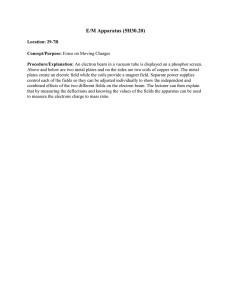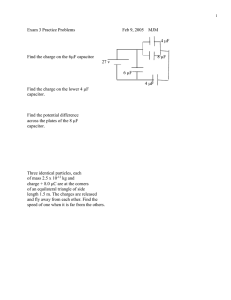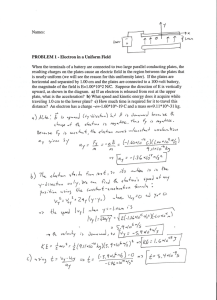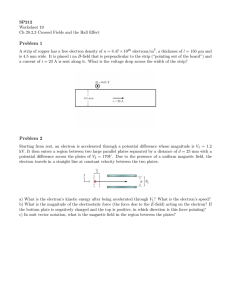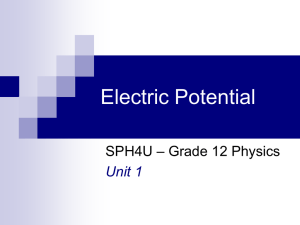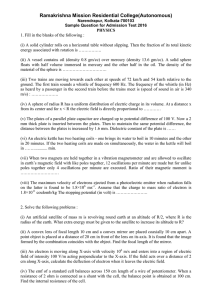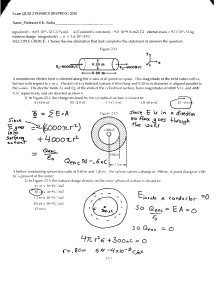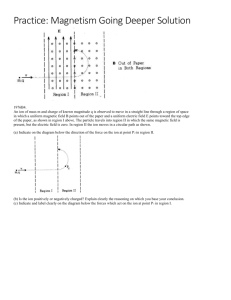TAP 409-3: Uniform electric fields
advertisement
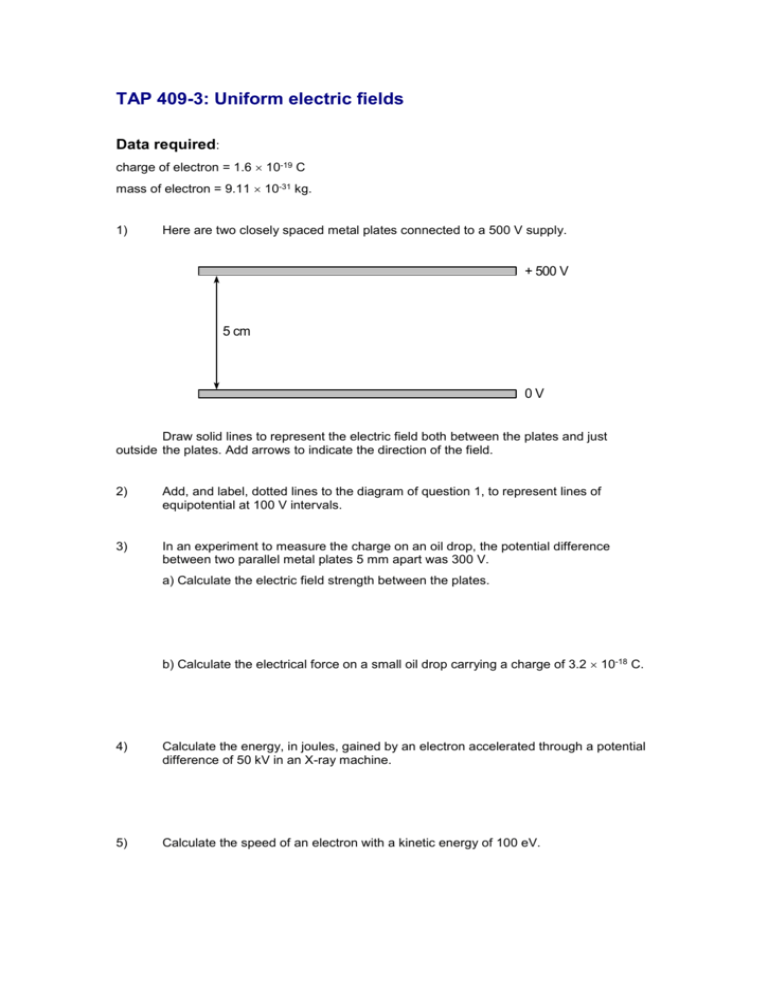
TAP 409-3: Uniform electric fields
Data required:
charge of electron = 1.6 10-19 C
mass of electron = 9.11 10-31 kg.
1)
Here are two closely spaced metal plates connected to a 500 V supply.
+ 500 V
5 cm
0V
Draw solid lines to represent the electric field both between the plates and just
outside the plates. Add arrows to indicate the direction of the field.
2)
Add, and label, dotted lines to the diagram of question 1, to represent lines of
equipotential at 100 V intervals.
3)
In an experiment to measure the charge on an oil drop, the potential difference
between two parallel metal plates 5 mm apart was 300 V.
a) Calculate the electric field strength between the plates.
b) Calculate the electrical force on a small oil drop carrying a charge of 3.2 10-18 C.
4)
Calculate the energy, in joules, gained by an electron accelerated through a potential
difference of 50 kV in an X-ray machine.
5)
Calculate the speed of an electron with a kinetic energy of 100 eV.
Hints
3.
Remember to convert millimetres to metres.
4.
Use the magnitude of the electronic charge. The negative sign is best ignored in this
calculation.
5.
Remember to convert the electron volts into joules.
Practical advice
These questions are intended to be easy, to reinforce understanding and to build confidence
Answers and worked solutions
+ 500 V
+ 400 V
+ 300 V
+ 200 V
0V
2)
+ 100 V
Green lines above (without arrows).
3)
a)
E = V/d = 300 / 0.005 = 6 x 104 V m-1.
b)
F = EQ = 6 x 104 x 3.2 x 10-18 = 1.92 x 10-13 N
4)
W = QV = 1.6 x 10-19 x 50,000 = 8 x 10-15 J
5)
The energy gained will have a positive value. Both the charge and the potential
difference are negative:
100 eV 100 (1.6 10 19 J)
1.6 10 17 J
1
2
mv 2 1.6 10 17 J
so
v {[ 2 (1.6 10 17 J)] /(9.1 10 31 kg)} 1/ 2
5.9 10 6 m s 1.
External reference
This activity is taken from Advancing Physics chapter 16, 10W
